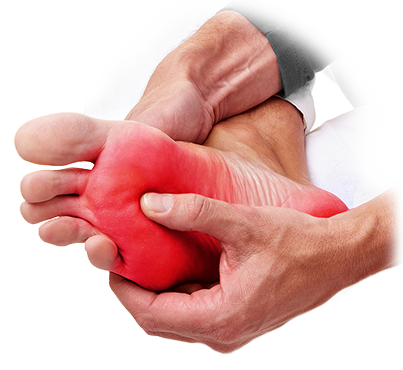
When you lose your feeling in your feet, you lose your independence and freedom. The usual progression is numbness and tingling followed by more numbness and pain and loss of balance. Next comes falls which lead to the need for a cane, walker, "furniture surfing" which is holding on to the couch, walls or counters to get from one area of your home to the next, and unfortunately, a wheelchair.
Treatment for neuropathy performed in the office has been found to be very effective and extremely comfortable. It consists of a Health light Low Level Light Therapy (LLLT) boot to reduce inflammation and promote healing as well as vibrational therapy and nutritional supplementation.
Health light, which was one of the first Cold Lasers to be approved by the USFDA for the specific treatment of neuropathy. It delivers consistent results and when combined with other therapies in this office allows many patients to improve feeling in their feet and hands.

Neuropathy is a condition of the nervous system that typically causes numbness, tingling, burning, aching, and a variety of other symptoms. Many patients also report experiencing restless legs or throbbing, cramping pain in their hands or feet.
Neuropathy can result from problems such as traumatic injuries, infections, metabolic problems and exposure to toxins. One of the most common causes is diabetes.
Poor blood circulation may also be a major contributing factor that leads to neuropathy. Diabetics are especially susceptible to neuropathy due to the damage high sugar levels may inflict on the small vessels responsible for delivering blood to the nerves. High glucose levels are believed to adversely affect the amount of oxygen provided to the nerves thus leading to neuropathy.
Peripheral Neuropathy is a medical term that describes the problems that occur when your nerve endings are damaged. If you have had Peripheral Neuropathy pain for 3 years or less, your chance for relief is extremely high. If you have been diagnosed with with pain related to Neuropathy, please contact us to schedule a consultation.
It’s not always easy to pinpoint the cause of Peripheral Neuropathy. A number of factors can contribute. Please call our clinic to learn if this treatment can help your condition.

Diabetes is the most common cause of Peripheral Neuropathy and can occur even in Diabetics who keep their blood sugar levels under control.

Patients undergoing chemotherapy often develop Neuropathy during or after the treatment.

Neuropathy commonly occurs after injury to nerves in the legs, and in patients diagnosed with Reflex Sympathetic Dystrophy due to trauma.

Poor circulation leading to foot ulcers, and blockage of blood supply to the leg can also cause Neuropathy.

Many alcoholics develop Peripheral Neuropathy due to nerve ending damage.

Peripheral Neuropathy can be an associated medical condition for patients diagnosed with Restless Legs Syndrome, characterized by cramping and other unpleasant sensations in the legs.

Autoimmune diseases, kidney disease, liver disease and thyroid conditions can also cause Peripheral Neuropathy, as can certain viral or bacterial infections, including Hepatitis C and HIV/AIDS.